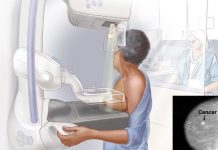A pregnancy test is carried out to discover or detect human chorionic gonadotropin (HCG) in blood as well as urine and use the hormone to determine whether an individual is pregnant or not. HCG testing can be carried out on a blood sample which is usually done in a medical office or hospital or on urine which can be carried out in an office, hospital or at home. One can easily tell if a woman is pregnant by noticing at least one common pregnancy symptoms which are especially noticeable at a very early stage of pregnancy on. Some of these symptoms include
- A missed period
- Feeling exhausted
- Urinating more than normal
- Sensitive and swollen breasts
- Nausea
- Vomiting
If you notice any of these symptoms, talk to your doctor, especially if you have recently had unprotected sex.
ALSO CHECK OUT:Top 10 Best Food For Pregnant Women
How to carry out a pregnancy test
Method 1
Home Urine Pregnancy Test:
The home PT works by detecting the hormone human chorionic gonadotropin (HCG) urine. This hormone can only be found in the body during pregnancy. A chemical in the stick of the test stripe changes color when it comes into contact with this hormone. Urine tests will typically show positive around four weeks after the last menstrual period and are best done in the morning as HCG levels are then highest. A pregnancy test strip is used for Home Pregnancy Tests. To use a pregnancy test strip, the following steps should be taken
- Collect a sample of urine (use first morning urine as the hCG will be the most concentrated) in a cup
- Insert the test strip into the sample for a short while
- After a few seconds, remove the test strip from the sample and allow it to dry
- After a few minutes, you can read the results of the test. The appearance of one line indicates a negative result, while the appearance of two lines (even with a very faint) indicates a positive result
N.B
With a midstream format test, urinate directly onto the test strip and allow the test to dry and read the results in a few minutes. Just like with the test strips, when two lines appears it indicates a positive result for pregnancy. Digital home pregnancy tests show the results with a clear NO or YES displayed on the screen.
Method 2. Clinical Urine Test

A clinical urine test can be carried out at the hospital in your doctor’s office. This test may not necessarily be more accurate than an HPT. However, your doctor may be able to help eliminate any possible errors that may affect the accuracy of the test. A clinical urine test usually cost more than a Home Pregnancy Test. The results of a clinical urine test can vary depending on the medical facility that you visit. However, you can expect your results within a week of taking the test.
Method three. Blood test
This test can be taken at your doctor’s office. It is a laboratory test that detects HCG in the blood to confirm pregnancy. There are two types of pregnancy blood tests:
You might wonder Can salt water prevent pregnancy? – best birth control methods before and after sex
Qualitative HCG blood test
This test checks to see if there is any HCG being produced in the body and it gives a simple yes or no answer as to whether you’re pregnant.
Quantitative HCG Blood Test
This test is carried out to discover the specific level of HCG in the blood. When your HCG level is higher or lower than expected depending on how far along you are in the pregnancy, your doctor may order further tests which will include an ultrasound or a repeat of the hCG test in a couple of days. Quantitative HCG blood tests are very accurate as they can measure the exact amount of HCG in the blood and also detect smaller amounts of the hormone than a qualitative HCG blood test or a urine test. Blood tests are more expensive than home tests, and you have to wait longer for your results.
Method 4
Ultra Sound
Obstetric ultrasonography can detect the gestational sac as early as four and a half weeks of gestation and the yolk sac at five weeks gestation. The embryo can be seen and measured by five and a half weeks of pregnancy. The doctors can see the heartbeat with an ultra sound as early as six weeks, and usually by the seventh week of pregnancy it becomes highly visible.
References
Wikipidia.com
Medistudents.com
Healthline.com
Early pregnancy store.




